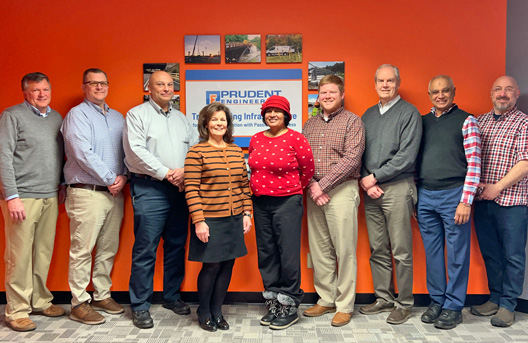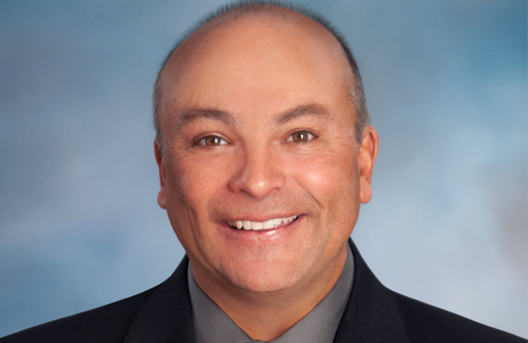TEAM MEMBER SPOTLIGHT: Frederick Burgwardt, PE
ROCHESTER, NY

Can you share some insights into your professional journey that have shaped your career in bridge and structural engineering?
Looking back, it is clear that decisions I made at a relatively young age, set me on a course for an interesting and rewarding career that allowed for a wonderful family life. My grandfather and father were promoters of technical education. Science and math were my strengths in high school, so I followed in my father’s footsteps to pursue an engineering degree at Clarkson University. I chose Civil Engineering as I thought it would allow me to spend at least some of my work days outdoors. While a college student, I gained valuable experience over two summers as a Transportation Construction Inspector for NYSDOT. After graduation in 1984, I began what would turn out to be a 33-year long career with NYSDOT in Region 4. Over these years I was fortunate to have the opportunity to contribute to design of significant transportation highway and bridge projects in the region including the “Can of Worms” Interchange reconstruction, Rt. 531 Extension (Manitou Rd. to Washington St.), Rt. 332 Capacity Improvement with restrictive median and innovative access management strategies, and the recently completed I-390/I-490 Western Interchange improvement. Three seasons devoted to bridge inspection in the early 1990’s and my last four years serving as a Design Project Manager in the Structures group in Region 4 further solidified my interest and experience with design and rehabilitation of highway bridges. I enjoy freely sharing my experiences and knowledge if it can be helpful to others. So, I am blessed to serve in my current position at Prudent Engineering. It affords the opportunity to work with an amazing team on a wide variety of projects that also feeds my interest in continuing to grow my knowledge and capabilities each day.
In your role as Manager of Bridge and Structural Condition Inspection, what strategies do you employ to ensure the highest standards of safety and integrity are maintained in the inspection process?
Our inspections are primarily visual, but many times ‘hands-on’ inspection of some bridge elements is required. In that case the inspector must physically position their body in very close proximity to the structure to be inspected, essentially within “arms reach”. To accomplish this safely takes dedicated advance planning and visualization of the inspection process. The inspection Team Leader is responsible for assuring the inspection is completed with safety as the highest priority, and this includes promoting clear communication and coordination with all parties involved in the inspection operation, which may include work zone traffic control workers, railroad flag persons, and special access equipment operators.
A visit to the site in advance of the inspection is preferred, but not always practical. A review of the methods utilized and conditions and potential hazards encountered during a previous inspection, as documented in past inspection reports is necessary. Using other tools such as Google Earth, personal knowledge of the area and limitations of access equipment are also considered in developing the plan. Inspections may require specialized safety training (such as fall protection) or testing equipment (such as air quality monitors) which must be arranged for ahead of the inspection. If conditions (eg. weather, traffic volume, stream flow) differ from what was anticipated, to the extent that safety may be compromised, the operation is suspended and rescheduled. Our recent inspection of the NYPA Lewiston Dam North Buttress cells with HATCH Associates via crane supported man-basket was an example of the extensive advance planning that is sometimes required for the successful outcome of a safe inspection.
In your opinion, what are some of the most pressing challenges facing the field of bridge and structural engineering today, and how do you envision Prudent Engineering addressing these challenges in the future?
Engineering design and bridge construction costs are continually increasing. The vast existing highway and bridge infrastructure that supports our nation’s economy is aging. Mega-projects that serve tens of thousands of vehicles per day receive political support and eventually are funded. But, in my opinion, even with the recent Federal government increases in infrastructure spending, maintaining our rural local (county, town) bridges in a state of good repair will remain a challenge. State funding programs such as Bridge NY are available to help local municipalities but the competition for limited funds tends to favor bridge replacement over bridge maintenance and preservation. As bridge inspectors, we are witness to important bridge conditions that are left unrepaired, unmaintained, or repaired with poor materials or methods. Local highway workers many times are attempting repairs without the benefit of advice from experienced structural engineers. By forging close relationships with local bridge owners, Prudent Engineering can help communities cost-effectively meet the challenges of bridge maintenance and preservation that can postpone the need to load post or close local bridges to traffic.
In your opinion, what sets Prudent Engineering apart in terms of its approach to structural condition inspection services, and how do you plan to contribute to maintaining and enhancing our standards of excellence?
Prudent Engineering’s specialized capabilities (such as Hydrographic below water mapping, and LiDAR scanning) in combination with our more conventional visual inspection services is an advantage to potential clients not offered by all firms. I like to promote the use of these available specialized services wherever appropriate to enhance our inspections or improve efficiency and cost-effectiveness for our clients. Continuing education and training for our inspection staff in topics such as inspection safety, testing methods, structural behavior and failure modes is encouraged. Our participation in higher profile, unique or complex inspections (such as Ogdensburg Bridge, Lewiston Dam) enhances our visibility to clients and other firms and will be pursued when within our capabilities.


